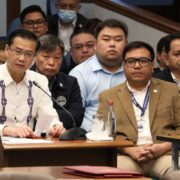OFW remittances: A low hanging fruit for Philippine property recovery

Remittances sent home by overseas Filipino workers (OFWs) have shown consistent and stable growth, remaining a significant driver of personal consumption in the country.
In 2024, remittances grew by 3 percent to $38.3 billion (P2.2 trillion) from $37.2 billion (P2.1 trillion) the previous year. Both years reflected the strong contribution of the Filipino diaspora to the Philippine economy.
The Bangko Sentral ng Pilipinas (BSP) predicts a continued upward trend, maintaining stable growth of 3 percent for 2025. Moving forward, we expect continued rise in OFW deployment which should result in a sustained rise in remittances.
Colliers expects the sustained growth in OFW remittances to support economic expansion and boost retail, leisure, and residential demand across the country.
Remittance-receiving households should also partly lift take-up for vertical and horizontal units within and outside Metro Manila, particularly for projects under the affordable to lower mid-income segments (P3.2 million to P7 million). With more attractive pre-selling, and secondary promos and payment terms being offered by developers and banks, now is definitely a good time to shop around and look for the best deal.

Rising remittances and growing allocation for real estate requirements
In 2024, the United States remained the largest source of remittance inflows, accounting for 41 percent of the total. This was followed by Singapore (7 percent) and Saudi Arabia (6 percent).
What’s notable is that more highly-skilled Filipinos are being deployed abroad. Hence, OFWs get higher salaries, enabling them to send more money to their families and loved ones.
Data from BSP showed that OFW households primarily allocate their funds for essential needs, with the largest share dedicated to food and other household needs, education, and medical expenses. Compared to other items, the purchase of houses was not among the priorities of OFW households.
Despite this, there has been an increase in the percentage of households allocating their remittances to homeownership. In Q3 2024, 6.7 percent of OFW households allocated their remittances for house purchases, but by Q4, this figure nearly doubled to 12.7 percent.

Solid demand for horizontal
Colliers has observed major property firms implementing geographic diversification and actively landbanking particularly in high growth regions.
In our view, developers will likely venture into more horizontal projects in key regions such as Calabarzon, Central Luzon, Central and Western Visayas, and Davao which are among the top sources of deployed OFWs.
Property firms are aggressively landbanking in these regions to take advantage of strong end-user demand. They should also evaluate the attractive product types and price segments in the areas where they are planning to launch.
From 2016 to 2024, the prices of house and lot properties in Central and Western Visayas, Calaba (Cavite-Laguna-Batangas) corridor, Davao, and Central Luzon grew at an annual average rate of 3 percent to 12 percent, while lot-only prices increased between 8 percent and 18 percent.
Shop around for attractive RFO promos
Colliers believes that now is an opportune time for OFWs to acquire residential units, given the attractive promos for ready-for-occupancy (RFO) units and house and lot projects.
Despite tepid condominium launches and take-up in select parts of Metro Manila, Colliers believes that demand should partly be buoyed by the OFW market given that their allocation for real estate requirements has been increasing; more Filipinos continue to be deployed abroad; and remittances have been increasing on a sustained basis per annum.
There’s no doubt that the OFW market is a low hanging fruit that developers should maximize.
For feedback, e-mail joey.bondoc@colliers.com
Prior to joining Colliers in March 2016, Joey worked as a Research Manager for a research and consutancy firm where he handled business, political, and macroeconomic analysis. He took part in a number of consultancy projects with multilateral agencies and provided research support and policy recommendations to key government officials and top executives of MNCs in the Philippines.



















